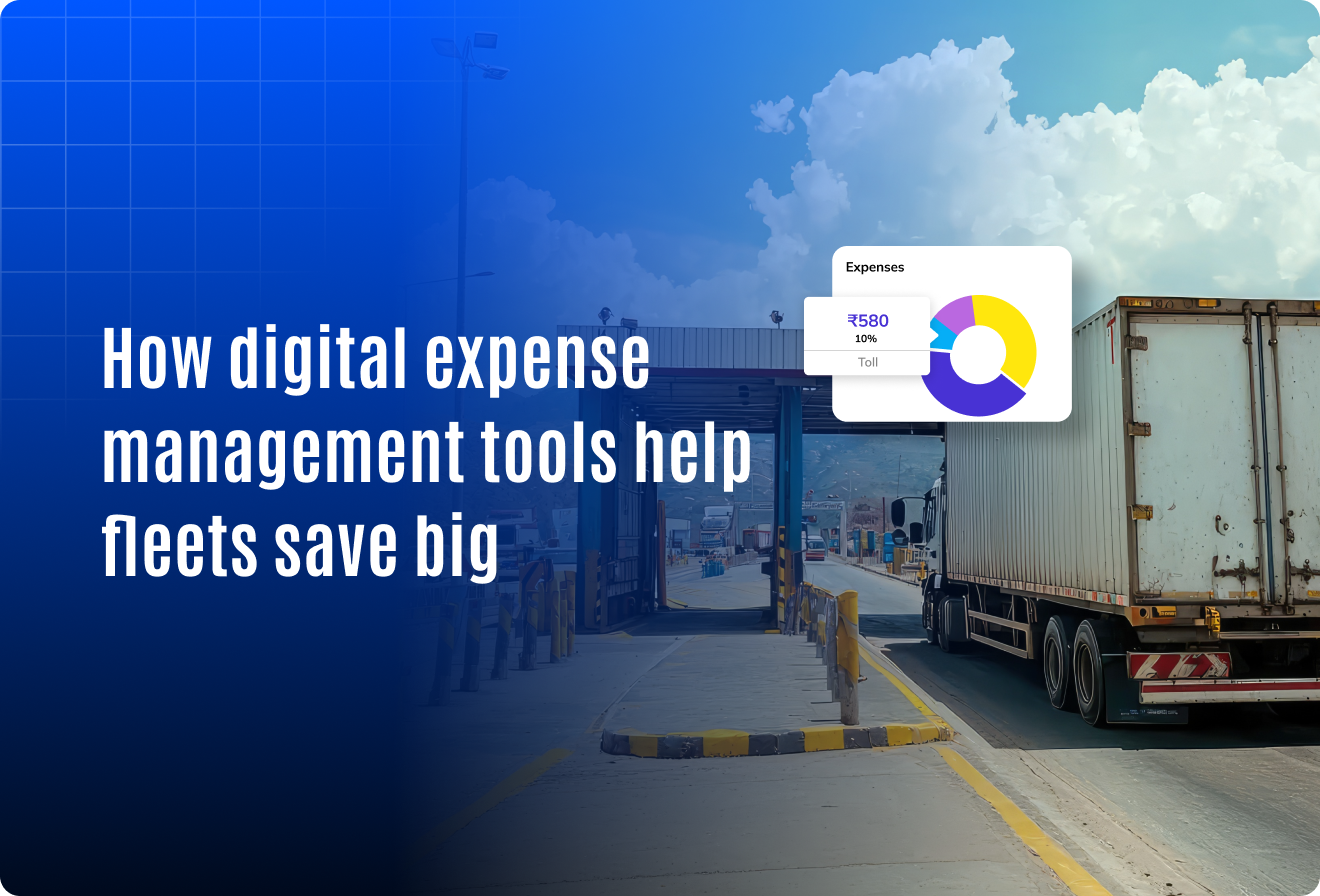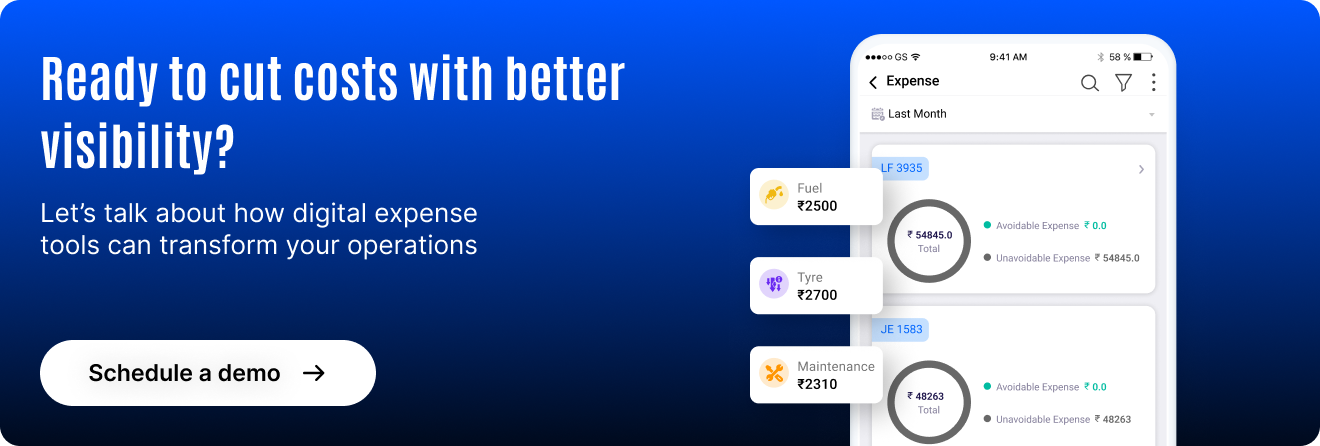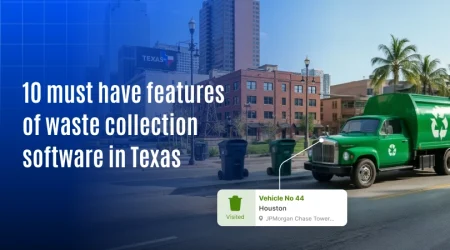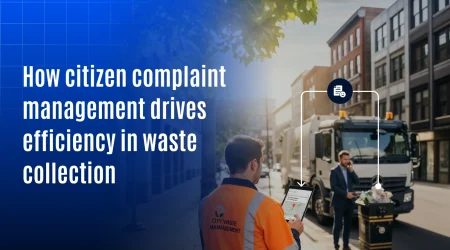How digital expense management tools help fleets save big

Managing fleet operations without tight control over expenses is like driving blind. Fleet maintenance and repairs typically make up more than 9% of total operating expenses, as highlighted by industry research. Another industry report shows that fleets can lose up to 15% of their monthly budget due to untracked or misreported expenses such as tolls, fuel irregularities, and driver allowances.
Manual expense tracking often results in delays, inconsistencies, and errors. Consequently, these gaps affect financial reporting and create roadblocks in cost optimization. Moreover, with fuel prices fluctuating and operational demands rising, more fleets are now adopting digital expense management tools to gain control and clarity over their finances.
The expense management software, in turn, provides centralized and real-time tracking of every rupee spent. Whether it’s fuel, repairs, or miscellaneous trip costs, fleet managers can consistently monitor spending patterns, detect wastage, and make data-driven financial decisions. Ultimately, these improvements lead to better control and directly enhance overall profitability.
Common challenges without expense management tools
Fleets that rely on manual or disconnected systems often face serious financial blind spots. When digital tools are missing, it’s tough to control expenses or spot potential savings. Below are some of the key challenges fleets encounter:
- Uncategorized expenses
Tolls, fuel, driver allowances, parking, and repair costs often go unclassified. This makes it hard to track where money is going and limits financial visibility. - Inaccurate data entry
Manual tracking leads to errors such as duplicate entries, missing bills, or incorrect figures. These mistakes can distort reports and cause budgeting issues. - Untracked recurring costs
Fixed expenses like insurance, licensing fees, or salaries may be missed or not factored into regular reports. This results in gaps in financial planning. - Delayed approvals and updates
Without real-time input, expenses are often logged days later. This delays approvals and causes discrepancies in day-to-day financial reporting. - Lack of branch or vehicle-level insights
In large fleets, tracking costs across multiple branches or specific vehicles becomes complex without centralized systems. It hinders cost comparisons and optimization efforts.
Top features that drive cost savings
Instead of just recording expenses, digital tools turn cost data into actionable insights. These are the standout features that help fleets optimize their financial performance:
- Cost per vehicle analysis
Track how much each vehicle is spending on fuel, maintenance, or tolls. This helps identify underperforming assets and informs decisions like rerouting, downsizing, or preventive maintenance planning. - Historical trend analysis
Compare current expenses with previous months or quarters. Detect unusual spikes and recurring cost patterns that can be corrected with policy changes or vendor negotiations. - Indirect cost visibility
Monitor hidden costs such as idle time fuel burn, depreciation, or unreported tolls. These often go unnoticed but have a significant impact over time. - Visual dashboards and charts
Data is turned into intuitive visuals. Managers can instantly see the top expense categories or the most expensive routes and take corrective action without digging through reports. - Fleet-wide budgeting insights
Get a total view of how much is being spent fleet-wide and how it aligns with budget targets. Use this to fine-tune financial strategies before issues arise.
Benefits of using digital expense management tools
Integrating a digital expense system does more than streamline logging. It helps fleets turn financial data into cost-saving decisions and operational improvements. Here are the key benefits:
- Improved cost visibility
Managers gain a clear and accurate picture of where money is going. Every rupee spent is traceable by category, vehicle, and branch, which helps avoid waste and misuse. - Faster decision-making
With real-time data and visual reports, managers can act quickly. With digital tools, you can quickly spot budget overruns or fuel cost spikes, minimizing decision delays. - Higher financial accuracy
Eliminating manual errors means reports reflect true numbers. This boosts the reliability of audits, internal reviews, and external reporting. - Optimized budgeting and planning
Accurate categorization and trend analysis support more precise budget forecasting. Fleets can allocate resources better and avoid sudden shortfalls. - Better control over recurring expenses
Recurring costs like insurance, driver salaries, or service fees can be monitored and managed with greater consistency, reducing the chances of overlooked or duplicated payments. - Support for growth and scalability
As fleets expand across regions or asset types, a centralized system ensures all expense data stays organized and actionable.
Conclusion: Expense management software leads to bigger savings
In fleet operations, every small cost adds up. Without proper tracking, it becomes nearly impossible to see where money is leaking or how it can be saved. Hence, expense management software brings structure, visibility, and accuracy to this process.
From real-time logging and mobile uploads to in-depth reports and cost analysis, these tools empower fleet managers to take control of their finances. The result is not just cleaner records but smarter decisions, better budgeting, and measurable savings across the fleet.
For system integrators and fleet operators, adopting a digital expense solution is no longer a nice-to-have. It is a necessary step toward building a more efficient and financially resilient operation.



